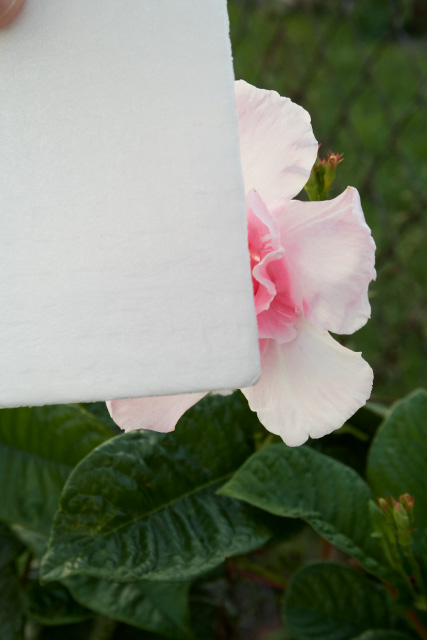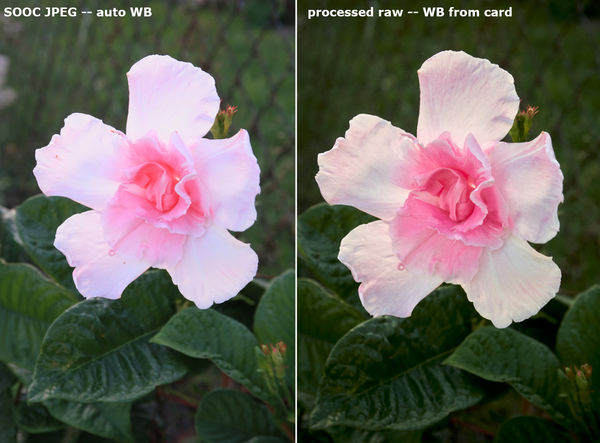White/Grey card necessary?
Jul 31, 2019 10:59:14 #
Is a White card/Grey card necessary with newer DSLR cameras? If so any recommendation?
Jul 31, 2019 11:06:10 #
I used a set for awhile, but found out I really didn't know what in hell I was doing, and the use of these items did not improve my photos one iota.
Jul 31, 2019 11:14:28 #
For color balance: Perhaps
For exposure control: Probably not. As long as the palm of your hand is in the same light that is striking the subject and is not TOO dirty, you can meter on the palm of your hand then "overexpose" by one stop. There has been previous discussions of this concept on UHH and not everyone is on board with the idea. It , however, works for me.
For exposure control: Probably not. As long as the palm of your hand is in the same light that is striking the subject and is not TOO dirty, you can meter on the palm of your hand then "overexpose" by one stop. There has been previous discussions of this concept on UHH and not everyone is on board with the idea. It , however, works for me.
Jul 31, 2019 11:18:58 #
Ysarex
Loc: St. Louis
junglejim1949 wrote:
Is a White card/Grey card necessary with newer DSLR cameras? If so any recommendation?
For what purpose: Exposure or white balance? I use one constantly for white balance but I'm happy with the camera meter for exposure. Depends on what you're shooting and your exposure goals (raw or JPEG).
For white balance I just use a piece of Styrofoam cut from a food tray -- free and just as good as anything you can purchase.
If you're shooting JPEG you must set WB when you take the photo. If you're shooting raw you can set WB later in processing but it's nice to have a target for that (my Styrofoam card).
Joe
Jul 31, 2019 11:27:45 #
I take a custom white balance from a white card whenever it's convenient, even if I am shooting RAW. Then I know it is correct and I don't have to worry about tweaking it, or I can tweak it if I want to, for instance, warm up skin tones a little.
Jul 31, 2019 11:46:41 #
Angel Star Photography
Loc: Tacoma, WA
junglejim1949 wrote:
Is a White card/Grey card necessary with newer DSLR cameras? If so any recommendation?
I always have one with me. I carry a credit-card size WhiBal G7 pocket card in my wallet and an X-rite Color Passport 2 with my camera gear. Shooting raw, I sometimes simply let the camera set the white balance and then adjust in post-processing either to my liking or by selecting a "neutral" target in the image.
I would estimate that I use these items about 20%, maybe less, and it really depends on what I plan to do with the image later.
A note on the Color Passport item...this product has a white/grey card target for setting white balance. It also has color targets which I use to calibrate my camera for the day and lens in use but that's for another topic.
Jul 31, 2019 11:57:34 #
manofhg
Loc: Knoxville, TN
I recently purchased an ExpoDisc which is a white balance filter. I've used it once so far and think the results were good. It says that if you use it correctly, that your exposure will be correct as well and I see why, but that isn't as much a function of the filter, but more of a function of using the same light for color balance as a sample of the amount of light you will be working with. Yes, you can shoot in RAW, and I do, and process everything later, but I had rather have the shots correctly exposed now as opposed to trying to figure it out later. My only use, so far, was in a ceremony and reception. I set the color balance of each area per the directions for the ExpoDisc prior to the event and then shot each area with the assigned preset. Post processing required no color correction and very little exposure correction. Hence, PP was short and the pictures were acceptable.
Here is a pic from the ceremony.....https://photos.app.goo.gl/TyrivAXf3QSKT7Xu8
And here is a pic from the reception, different lighting entirely......https://photos.app.goo.gl/CqJn2Wk4hkP6jn829
Here is a pic from the ceremony.....https://photos.app.goo.gl/TyrivAXf3QSKT7Xu8
And here is a pic from the reception, different lighting entirely......https://photos.app.goo.gl/CqJn2Wk4hkP6jn829
Jul 31, 2019 11:59:07 #
photogeneralist wrote:
For color balance: Perhaps
For exposure control: Probably not. As long as the palm of your hand is in the same light that is striking the subject and is not TOO dirty, you can meter on the palm of your hand then "overexpose" by one stop. There has been previous discussions of this concept on UHH and not everyone is on board with the idea. It , however, works for me.
For exposure control: Probably not. As long as the palm of your hand is in the same light that is striking the subject and is not TOO dirty, you can meter on the palm of your hand then "overexpose" by one stop. There has been previous discussions of this concept on UHH and not everyone is on board with the idea. It , however, works for me.
Yeah, always wash your hands before using them for metering.

Jul 31, 2019 12:00:46 #
Ysarex wrote:
You must not take many dynamic scenes involving lots of people - no time or place to put the card.For what purpose: Exposure or white balance? I use... (show quote)
Jul 31, 2019 12:14:16 #
Ysarex
Loc: St. Louis
rehess wrote:
You must not take many dynamic scenes involving lots of people - no time or place to put the card.
I shoot raw and only need one reference shot of the card for the scene lighting which I can take after I've taken the photos -- simple.
Joe
P.S. I was out in the garden yesterday evening pulling weeds and had the camera along. I took a break and snapped some photos of one of the mandevilla. There's always a Styrofoam card in my camera case and I use it. Below you can see my card shot to measure the light color and then a side by side of the camera's auto WB JPEG and the photo as I processed it last night.
Those mandevilla leaves are not blue green and they look awful that color. Most people of course never notice and don't notice the blue cast to the flower either.
Jul 31, 2019 12:59:56 #
junglejim1949 wrote:
Is a White card/Grey card necessary with newer DSLR cameras? If so any recommendation?
Sometimes it is, sometimes not.
When you are shooting in broad daylight, Daylight WB is usually all you need to use. This also helps to retain the actual colors of a sunset. You might even want to use that preserve the color of twilight or stormy weather.
But when the light starts to get tricky a gray card can help. This can happen when a lot of the light is bounced off of a colored wall or filtered through a canopy of leaves. When two parts of the scene are illuminated by different light you should probably not even try to get them both to balance.
Artificial light is even more difficult to judge because there are many different colors of "incandescent" light and interior walls are not always white or neutral gray. To make matters worse, fluorescent, mercury vapor and similar lights do not have a continuous spectrum. A green or orange spike in the middle of the color spectrum can make it very tricky to get things to look right.
All of this was also in issue with color transparency film so there were often at least two versions - daylight and tungsten balanced slide film. We also had to resort to multiple filters.
Jul 31, 2019 13:06:18 #
selmslie wrote:
Sometimes it is, sometimes not. br br When you ar... (show quote)
Thanks very informative
Jul 31, 2019 13:20:27 #
junglejim1949 wrote:
Is a White card/Grey card necessary with newer DSLR cameras? If so any recommendation?
Gray card is best used for setting exposure. White card might be good to set exposure if you use it to find the white clipping point. But neither are negated by DSLR metering systems. Whether they are necessary really depends on how you determine your exposures.
I use a ColorChecker Passport exclusively when color needs to be accurate. If I have two light sources - say tree canopy (green) and open sky (blue) I will take two readings and let the CCP software resolve the two light colors.
Jul 31, 2019 13:22:51 #
Gene51 wrote:
Gray card is best used for setting exposure. White card might be good to set exposure if you use it to find the white clipping point. But neither are negated by DSLR metering systems. Whether they are necessary really depends on how you determine your exposures.
I use a ColorChecker Passport exclusively when color needs to be accurate.
I use a ColorChecker Passport exclusively when color needs to be accurate.
Thank you for explaining the difference
Jul 31, 2019 13:37:13 #
Gene51 wrote:
... If I have two light sources - say tree canopy (green) and open sky (blue) I will take two readings and let the CCP software resolve the two light colors.
How does the CCP software resolve the two light colors? By splitting the difference? It's not clear how that would work.
Three light sources might be even trickier - direct sunlight, open shade and stuff under a green or autumn tree canopy.
I would expect that a color balance that was right for a part of the scene primarily lit by one of the three light colors would be wrong for the others.
If you want to reply, then register here. Registration is free and your account is created instantly, so you can post right away.







